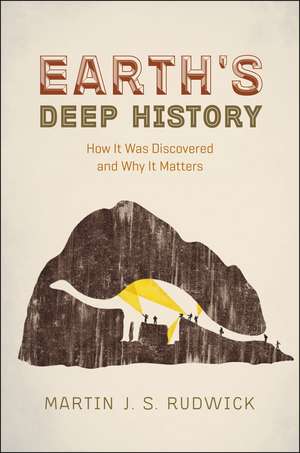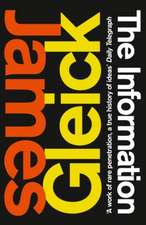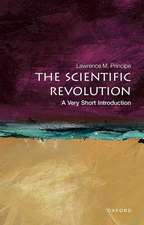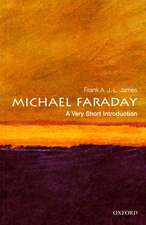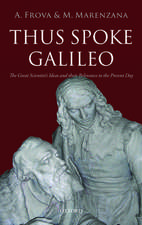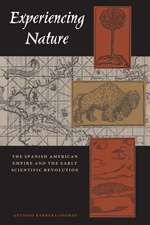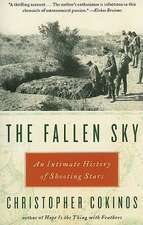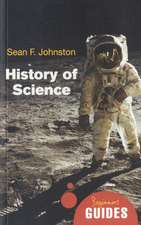Earth's Deep History: How It Was Discovered and Why It Matters
Autor Martin J. S. Rudwicken Limba Engleză Paperback – 5 ian 2017
Earth has been witness to mammoths and dinosaurs, global ice ages, continents colliding or splitting apart, and comets and asteroids crashing catastrophically to the surface, as well as the birth of humans who are curious to understand it. But how was all this discovered? How was the evidence for it collected and interpreted? And what kinds of people have sought to reconstruct this past that no human witnessed or recorded? In this sweeping and accessible book, Martin J. S. Rudwick, the premier historian of the Earth sciences, tells the gripping human story of the gradual realization that the Earth’s history has not only been unimaginably long but also astonishingly eventful.
Rudwick begins in the seventeenth century with Archbishop James Ussher, who famously dated the creation of the cosmos to 4004 BC. His narrative later turns to the crucial period of the late eighteenth and early nineteenth centuries, when inquisitive intellectuals, who came to call themselves “geologists,” began to interpret rocks and fossils, mountains and volcanoes, as natural archives of Earth’s history. He then shows how this geological evidence was used—and is still being used—to reconstruct a history of the Earth that is as varied and unpredictable as human history itself. Along the way, Rudwick rejects the popular view of this story as a conflict between science and religion and shows how the modern scientific account of the Earth’s deep history retains strong roots in Judaeo-Christian ideas.
Extensively illustrated, Earth’s Deep History is an engaging and impressive capstone to Rudwick’s distinguished career. Though the story of the Earth is inconceivable in length, Rudwick moves with grace from the earliest imaginings of our planet’s deep past to today’s scientific discoveries, proving that this is a tale at once timeless and timely.
Rudwick begins in the seventeenth century with Archbishop James Ussher, who famously dated the creation of the cosmos to 4004 BC. His narrative later turns to the crucial period of the late eighteenth and early nineteenth centuries, when inquisitive intellectuals, who came to call themselves “geologists,” began to interpret rocks and fossils, mountains and volcanoes, as natural archives of Earth’s history. He then shows how this geological evidence was used—and is still being used—to reconstruct a history of the Earth that is as varied and unpredictable as human history itself. Along the way, Rudwick rejects the popular view of this story as a conflict between science and religion and shows how the modern scientific account of the Earth’s deep history retains strong roots in Judaeo-Christian ideas.
Extensively illustrated, Earth’s Deep History is an engaging and impressive capstone to Rudwick’s distinguished career. Though the story of the Earth is inconceivable in length, Rudwick moves with grace from the earliest imaginings of our planet’s deep past to today’s scientific discoveries, proving that this is a tale at once timeless and timely.
Preț: 187.09 lei
Nou
Puncte Express: 281
Preț estimativ în valută:
35.81€ • 37.24$ • 30.01£
35.81€ • 37.24$ • 30.01£
Carte disponibilă
Livrare economică 20 februarie-06 martie
Livrare express 06-12 februarie pentru 32.67 lei
Preluare comenzi: 021 569.72.76
Specificații
ISBN-13: 9780226421971
ISBN-10: 022642197X
Pagini: 392
Ilustrații: 90 halftones, 5 line drawings
Dimensiuni: 152 x 229 x 25 mm
Greutate: 0.59 kg
Editura: University of Chicago Press
Colecția University of Chicago Press
ISBN-10: 022642197X
Pagini: 392
Ilustrații: 90 halftones, 5 line drawings
Dimensiuni: 152 x 229 x 25 mm
Greutate: 0.59 kg
Editura: University of Chicago Press
Colecția University of Chicago Press
Notă biografică
Martin J. S. Rudwick is professor emeritus of history at the University of California, San Diego, and affiliated scholar in the Department of the History and Philosophy of Science at the University of Cambridge. His many other books include Bursting the Limits of Time: The Reconstruction of Geohistory in the Age of Revolution and Worlds Before Adam: The Reconstruction of Geohistory in the Age of Reform, both also published by the University of Chicago Press.
Cuprins
Introduction
1. Making History a Science
The science of chronology
Dating world history
Periods of world history
Noah’s Flood as history
The finite cosmos
The threat of eternalism
2. Nature’s Own Antiquities
Historians and antiquaries
Natural antiquities
New ideas about fossils
New ideas about history
Fossils and the Flood
Plotting the Earth’s history
3. Sketching Big Pictures
A new scientific genre
A “sacred” theory?
A slowly cooling Earth?
A cyclic world-machine?
Worlds ancient and modern?
4. Expanding Time and History
Fossils as nature’s coins
Strata as nature’s archives
Volcanoes as nature’s monuments
Natural history and the history of nature
Guessing the Earth’s timescale
5. Bursting the Limits of Time
The reality of extinction
The Earth’s last revolution
The present as a key to the past
The testimony of erratic blocks
Biblical Flood and geological Deluge
6. Worlds Before Adam
Before the Earth’s last revolution
An age of strange reptiles
The new “stratigraphy”
Plotting the Earth’s long-term history
A slowly cooling Earth
7. Disturbing a Consensus
Geology and Genesis
A disconcerting outsider
Catastrophe versus uniformity
The great “Ice Age”
8. Human History in Nature’s History
Taming the Ice Age
Men among the mammoths
The question of evolution
Human evolution
9. Eventful Deep History
“Geology and Genesis” marginalized
The Earth’s history in perspective
Geology goes global
Towards the origin of life
The timescale of the Earth’s history
10. Global Histories of the Earth
Dating the Earth’s history
Continents and oceans
Controversy over continental “drift”
A new global tectonics
11. One Planet Among Many
Exploiting the Earth’s chronology
The return of catastrophes
Unraveling the deepest past
The Earth in cosmic context
12. Conclusion
Earth’s deep history: a retrospect
Past events and their causes
How reliable is knowledge of deep history?
Geology and Genesis re-evaluated
Appendix
Creationists out of Their Depth
Glossary
Further Reading
Bibliography
Sources of Illustrations
Acknowledgments
Index
1. Making History a Science
The science of chronology
Dating world history
Periods of world history
Noah’s Flood as history
The finite cosmos
The threat of eternalism
2. Nature’s Own Antiquities
Historians and antiquaries
Natural antiquities
New ideas about fossils
New ideas about history
Fossils and the Flood
Plotting the Earth’s history
3. Sketching Big Pictures
A new scientific genre
A “sacred” theory?
A slowly cooling Earth?
A cyclic world-machine?
Worlds ancient and modern?
4. Expanding Time and History
Fossils as nature’s coins
Strata as nature’s archives
Volcanoes as nature’s monuments
Natural history and the history of nature
Guessing the Earth’s timescale
5. Bursting the Limits of Time
The reality of extinction
The Earth’s last revolution
The present as a key to the past
The testimony of erratic blocks
Biblical Flood and geological Deluge
6. Worlds Before Adam
Before the Earth’s last revolution
An age of strange reptiles
The new “stratigraphy”
Plotting the Earth’s long-term history
A slowly cooling Earth
7. Disturbing a Consensus
Geology and Genesis
A disconcerting outsider
Catastrophe versus uniformity
The great “Ice Age”
8. Human History in Nature’s History
Taming the Ice Age
Men among the mammoths
The question of evolution
Human evolution
9. Eventful Deep History
“Geology and Genesis” marginalized
The Earth’s history in perspective
Geology goes global
Towards the origin of life
The timescale of the Earth’s history
10. Global Histories of the Earth
Dating the Earth’s history
Continents and oceans
Controversy over continental “drift”
A new global tectonics
11. One Planet Among Many
Exploiting the Earth’s chronology
The return of catastrophes
Unraveling the deepest past
The Earth in cosmic context
12. Conclusion
Earth’s deep history: a retrospect
Past events and their causes
How reliable is knowledge of deep history?
Geology and Genesis re-evaluated
Appendix
Creationists out of Their Depth
Glossary
Further Reading
Bibliography
Sources of Illustrations
Acknowledgments
Index
Recenzii
“Rudwick’s book is authoritative and riveting, and its historical breadth is bound to make geology exciting for readers from both sciences and humanities.”
Here, Rudwick tells the remarkable story of how the history of our planet evolved in the light of new ideas about humans’ connection to nature, advances in scientific methodology, and the changing influence of the Christian faith on man’s beliefs about Earth’s past. . . . He succeeds in weaving together a compelling account of how Earth’s timescale expanded to magnitudes far beyond those imagined by early scholars, and of the individuals responsible for advancing scientific thinking through their ideas and actions.”
“With his talent for encapsulating pre-modern mindsets, Rudwick deftly explains how ideas of natural history were embedded in cultural history. . . . Reading Rudwick’s prose is a pleasure.”
“An engaging read for nonscientists and specialists alike, this book pleasingly illustrates how we came to know more about our world and the many people who played a part in that.”
“Rudwick serves up . . . a wonderfully erudite and absorbing account of the spasmodic progress of chronological earth science.”
“Earth’s Deep History tells the story, not of the earth itself – that can be found in modern textbooks – but rather, the story of how ‘natural philosophers’ developed the ideas of geology accepted today. . . . This book is exhaustive in its survey of past geological and paleontological scholarship, and very detailed, but eminently readable and engaging. . . . This is a fascinating story of the development of this exciting branch of science.”
“Any book on the history of the earth sciences by Rudwick is worth reading immediately, and this may be one of his best. This volume is a detailed narrative of the construction of the historical framework of earth history. It is not a standard recitation of authors, dates, and publications, but a conceptual journey starting in the 17th century. The primary thesis is that the foundations of our modern chronology were built very early by thinkers not conventionally placed in our pantheon of heroic scientists (Archbishop James Ussher is a notable example). These early works “pre-adapted” later generations to think in broad historical terms, eventually developing histories that long precede humanity. Indeed, the book of Genesis itself may have provided the first conceptual model for a natural history. The popular ‘science versus religion’ theme in the origin of geology has been exaggerated for many reasons on both sides, the author states. Rudwick’s descriptions of the personalities and ideas in the development of ‘deep history’ are fascinating, well written, and novel. His effective dismissal of ‘young Earth creationism’ in the appendix is classic. Essential.”
"Earth’s Deep History, a grand sweep from the 17th to the 21st century, is a thrilling story of discovery and debate, insight and interpretation.”
